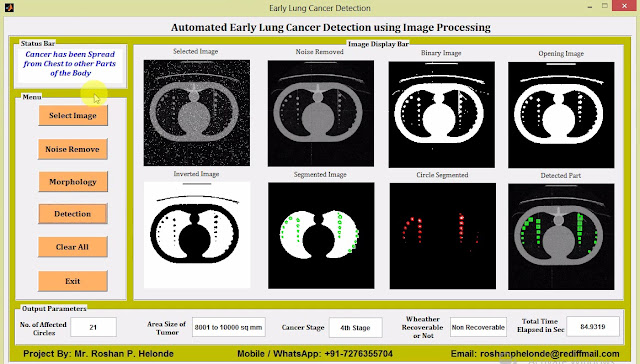ABSTRACT
PROJECT OUTPUT
PROJECT VIDEO
Determining of blood types is very important during emergency situation before administering a blood transfusion. Presently, these tests are performed manually by technicians, which can lead to human errors. Determination of the blood types in a short period of time and without human errors is very much essential. A method is developed based on processing of images acquired during the slide test. The image processing techniques such as thresholding and morphological operations are used. The images of the slide test are obtained from the pathological laboratory are processed and the occurrence of agglutination are evaluated. Thus the developed automated method determines the blood type using image processing techniques. The developed method is useful in emergency situation to determine the blood group without human error.
Before the blood transfusion it is necessary to perform certain tests. One of these tests is the determination of blood type. There are certain emergency situations which due to the risk of patient life, it is necessary to administer blood immediately. The tests currently available require moving the laboratory, it may not be time enough to determine the blood type and is administered blood type O negative considered universal donor and therefore provides less risk of incompatibility. However, despite the risk of incompatibilities be less sometimes that cause death of the patient and it is essential to avoid them. Thus, the ideal would be to determine the blood type of the patient. Secondly, the pre-transfusion tests are performed by technicians, which lead to human errors. Since these human errors can translate into fatal consequences, being one of the most significant causes of fatal blood transfusions is important to automate the procedure of these tests. Various blood type classification, diffusive reflectance, ABO Rh-D blood typing using simple morphological image processing.There is a scope for determining blood types using image processing techniques. Image segmentation algorithm for blood type classification and various image processing parameters are analyzed. Image features, such as color, texture, shape are analyzed. Low quality ancient document images and antibody agent analysis using image processing is explained. The slide test consists of the mixture of one drop of blood and one drop of reagent, being the result interpreted according to the occurrence or not of agglutination. The combination of the occurrence and nonoccurrence of the agglutination determines the blood type of the patient. Thus, the software developed in image processing techniques allows, through an image captured after the procedure of the slide test detect the occurrence of agglutination and consequently the blood type of the patient.
PROJECT OUTPUT
PROJECT VIDEO
Contact:
Mr. Roshan P. Helonde
Mobile: +91-7276355704
WhatsApp: +91-7276355704
Email: roshanphelonde@rediffmail.com

























